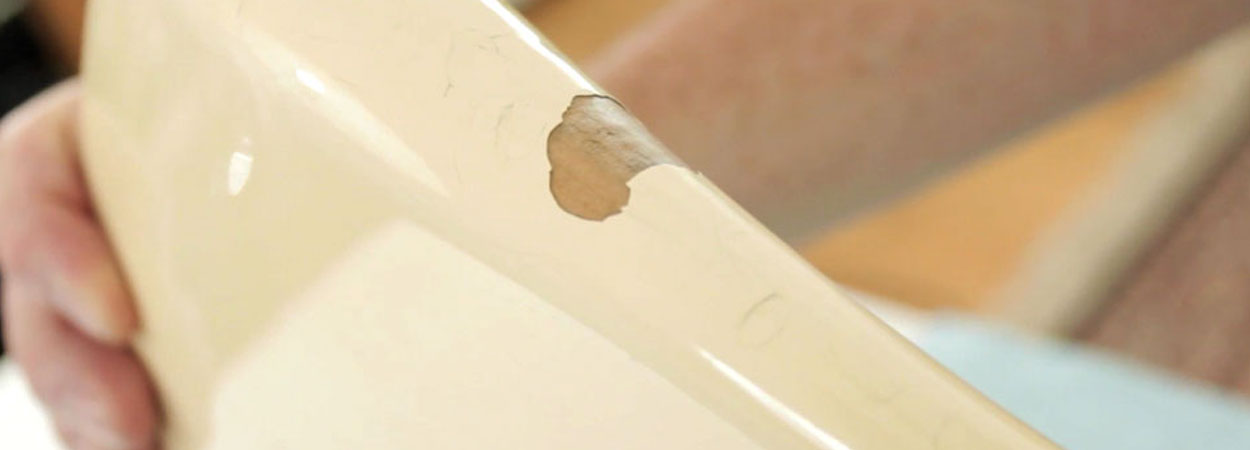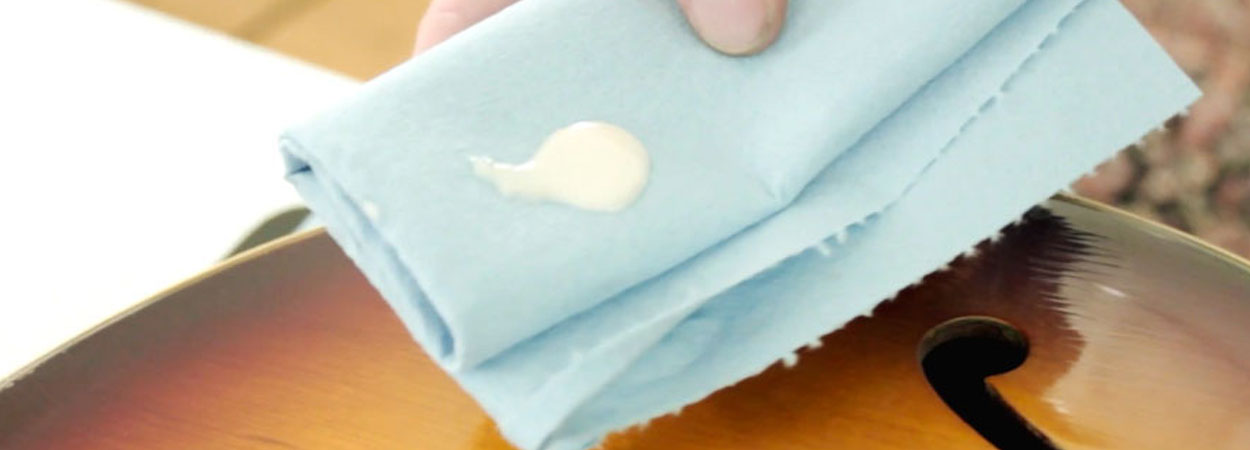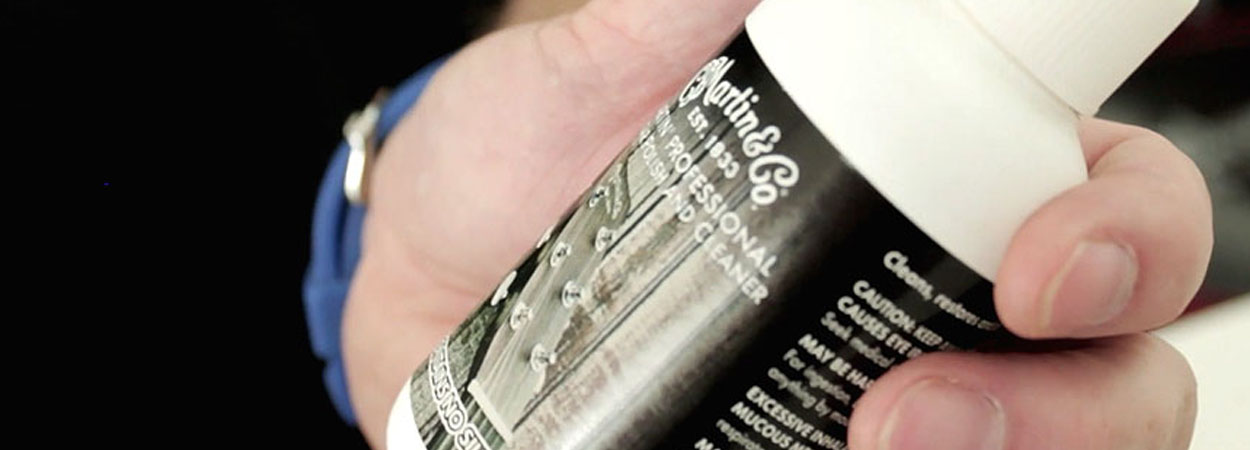In this comprehensive string changing course, James takes us through how the pros change strings! We begin our course with an introduction, talking about how often to change strings and which strings to use.
Summary: Different finishes
The main two types of finish on guitars are Polyurethane (poly) and Nitrocellulose (nitro). These two types of finish need to be treated and looked after differently, so you first need to recognise which finish you have. You can further expand the list by bringing in vintage instruments. Even though these will very likely be nitro finishes, you need to take extra care with certain problems that arise over time. We will cover how to clean all of these finishes separately, including acoustic finishes, but first let's work out which finish you have!
Poly finish

Poly finishes are typically quite thick and high-gloss. You usually won't see any wood grain (with sunburst being a notable exception) and the finish wears very differently to nitro finishes. If a poly finish damages, you will often see cracks in the finish revealing the wood, rather than a gradually wear and faded look of the nitro finishes. If you have a Fender style guitar you are very likely to have a poly finish.
Nitro finish

Nitro finishes are far more subtle and thin than poly finishes. You will often be able to see the grain in the wood and the big difference is how they wear. Nitro guitars will gradually wear down to the wood giving you that classic beaten up look on your guitars (all relic guitars have a nitro finish).
As a final note, just remember that if you have a vintage or acoustic instrument we will be looking at those separately as they will be treated a little differently.
Summary: Cleaning poly finishes
With a poly finish, as they are so thick, you don't need to worry too much about how much you clean it. It really is as simple as using some blue towel (Scotts shop towel) and some pump polish. Spray the polish on the towel and away you go! You can wipe around the whole body, scratch plate and headstock to bring it up to a nice shine. You can go over it a few times until you are happy with the clean, and then you are done! Nice and simple.
Summary: Cleaning nitro finishes
With modern nitro finishes, like the one we have on this Gibson 339, you only have to be slightly more careful than with the poly finishes. As the guitars get older, the nitro finishes can start to wear thinner and that is when you need to be very careful, as we will come onto in the next lesson. For now, the same process applies as with the poly finish. You can use a pump polish, and James highly recommends Virtuoso pump polish, as shown below.

Just as before, you simply need to apply a small amount (2 sprays or so) to the blue towel and start cleaning the body. You can use the pump polish to clean the entire body, back, back of neck and headstock. Be sure to wipe off all of the pump polish you use. To help you see where the polish has not been wiped off, be sure to have a good light on what you are doing!
Summary: Virtuoso polish
When it comes to a vintage instrument, you are very often dealing with nitro finishes that have worn down. On the guitar we are using as a demo, you can also see checking, which is essentially where cracks have started to appear on the body. These fine cracks mean that you don't want to go anywhere near the guitar with a pump polish as it can get underneath the nitro and start staining the finish. Instead you should use a polish specifically designed for vintage instruments such as Virtuoso polish.

Just as before, you simply need to apply a small amount to the blue towel and start cleaning the body. With vintage instruments, you should go on a case by case basis, and if you are in any way unsure about putting product on the finish, don't! Simply use the blue cloth to wipe the finish to remove the base level of dirt. As a guide though, when you do use the polish, this is the rough amount to use:

Summary: Nitro or poly?
Acoustics can have both nitro and poly finishes, and to help work out which one yours is, a good indicator is the price. Generally speaking, cheaper acoustic guitars will be poly finishes as they take less time to do, and therefore can be sold cheaper. Guitars from the £1000 and upwards bracket will generally have nitro finishes as the hours have been put into getting that finish.
Equipment: Pump Polish
James recommends using Martin's acoustic pump polish, as shown below. This is a slightly thinner and easier to spread polish than the previous pump polishes we have used, which massively helps when cleaning acoustics. It also contains no silicon which can damage the finish, and so is important to avoid.
